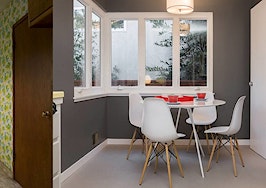- Conventional wisdom says that higher prices are bad for minorities because it prices them out of affordable housing.
- However, a new study suggests that higher prices are good for minorities because they are often accompanied by the loosening of lending standards.
- A 10 percent rise in prices means that the denial gap between whites and blacks lowers by 1 percent.
Just 14 years ago, improving minority homeownership was front-burner issue. In 2002, the Bush administration even set a goal of expanding the number of minorities who owned homes by 5.5 million — the approximate number of existing homes sold in a good year.
[Tweet “The Bush administration set a goal of expanding minority-owned homes by 5.5 million.”]
The subprime crash and housing depression put a sudden end to that effort. Minority homeownership plummeted, and surprisingly, it never achieved the attention from top policymakers in two Obama administrations that it enjoyed under their predecessor.
For homeownership in general, the housing depression was depressing. For minorities, it was a disaster. The African American household homeownership rate peaked at 49.4 percent in 2004 and bottomed out at 41.9 percent in the first quarter of this year, a decline of 7.5 points.
Hispanic American homeownership reached a high of 49.8 percent in 2006 and fell to 44.1 percent in the first quarter of this year, down 5.7 points.
By comparison, white non-Hispanic homeownership peaked at 76 percent in 2004 and fell to 73.4 percent by 2013 when the housing recovery officially began, a decline of only 2.6 points.
Do higher prices help minorities?
Conventional wisdom maintains that rising prices are bad for minorities because they are priced out of affordable housing, especially in gentrifying urban neighborhoods where today’s young millennial whites are driving prices sky high.
However, a new study by two economists at the Federal Trade Commission published in the Journal of Housing Economics this month suggests the opposite. Higher prices mean better times for minorities.
Rising prices are good for minorities — the economists argue — because they are accompanied by a loosening of lending standards.
[Tweet “Rising prices are good for minorities because a loosening of lending standards accompany them.”]
Rising values alter lenders’ judgments about acceptable levels of risk and expected rates of return on housing-related assets. “This variation may then translate into changes in the outcomes experienced by minority borrowers relative to non-minorities,” they concluded.
The FTC economists Christopher H. Wheeler and Luke M. Olson studied data gathered for the Home Mortgage Disclosure Act (HMDA) from 1990 to 2013. The objective was to estimate the relationship between annual metropolitan area-level house price inflation and the extent to which African American borrowers are denied mortgages compared to white borrowers.
The results suggest that, during housing booms, differences in the conditional denial rates between whites and African Americans become smaller.
Booms are also associated with decreases in the fraction of a lender’s denials in a metro area coming from majority black census tracts on average.
As prices rise (red line) the difference between loan denials for whites and blacks declines (blue line) and vice-versa.
A 10 percent rise in prices lowers denials gap by 1 percent
Wheeler and Olson found that increases in house price inflation are significantly associated with differences between black and white loan denials.
As the rate of inflation within a metropolitan area increases, the gap between blacks and whites shrinks, suggesting that, in times (or places) in which real estate is booming, mortgage lending appears to be more equal across individuals of these two racial groups than in times (or places) in which real estate is declining.
A 10 percentage point increase in the rate of house price inflation, for example, tends to be accompanied by a 0.5 to 1 percentage point decrease in the gap between the black denial rate and the white denial rate on average.
[Tweet “A 10 percent rise in prices lowers denial gap between whites and blacks by 1 percent.”]
These magnitudes amount to approximately 5 to 10 percent of the overall mean black-white denial difference.
In down times, the findings might suggest that redlining — the systematic avoidance of lending to certain neighborhoods — might be at work.
“We believe these findings raise an important consideration for agencies engaged in fair lending enforcement, as well as mortgage lenders that attempt to monitor their own fair lending compliance.
“The (apparent) systematic variation of underwriting standards with local house price inflation implies that perceived inequality in lending outcomes between races also varies over the housing cycle,” they wrote.
Lending standards are looser, minority homeownership is up
The study stopped at 2013, just as the current recovery was starting. However, a quick review of minority homeownership data suggests that the study is right.
- Lending standards, especially for FHA purchase loans (which are widely used by minority buyers) have loosened significantly between November 2012 before the recovery began and October 2015, according to the most recent Ellie Mae Origination Insights Report.
- Loan-to-value ratios are also down from 95 percent to 81 percent
- Median FICO scores are down from 704 to 654
- Debt-to-income ratios are up from 28:41 to 29:46
- After bottoming out in the first quarter of this year, homeownership rates for both African American and Hispanic Americans shot up in the following two quarters.
- The African American rate rose from 41.9 percent to 42 percent in the second quarter, then fell back to 42.6 percent in the third quarter.
- The Hispanic American rate rose from 44.1 percent to 46.1 percent.
- During the same period, the white rate fell from 72 percent to 71.9 percent.
If these trends continue, perhaps the gap between white and minority homeownership will continue to shrink as the gap between denial rates declines.
[Tweet “If trends continue, perhaps the white and minority homeownership gap will shrink.”]
Steve Cook is editor and co-publisher of Real Estate Economy Watch. Visit him on LinkedIn and Facebook.




